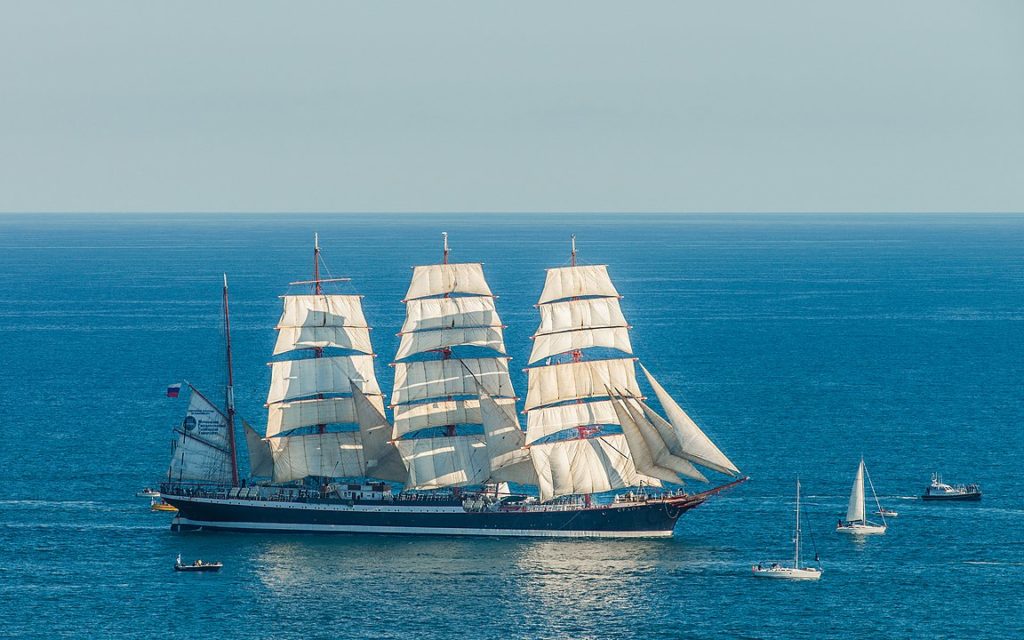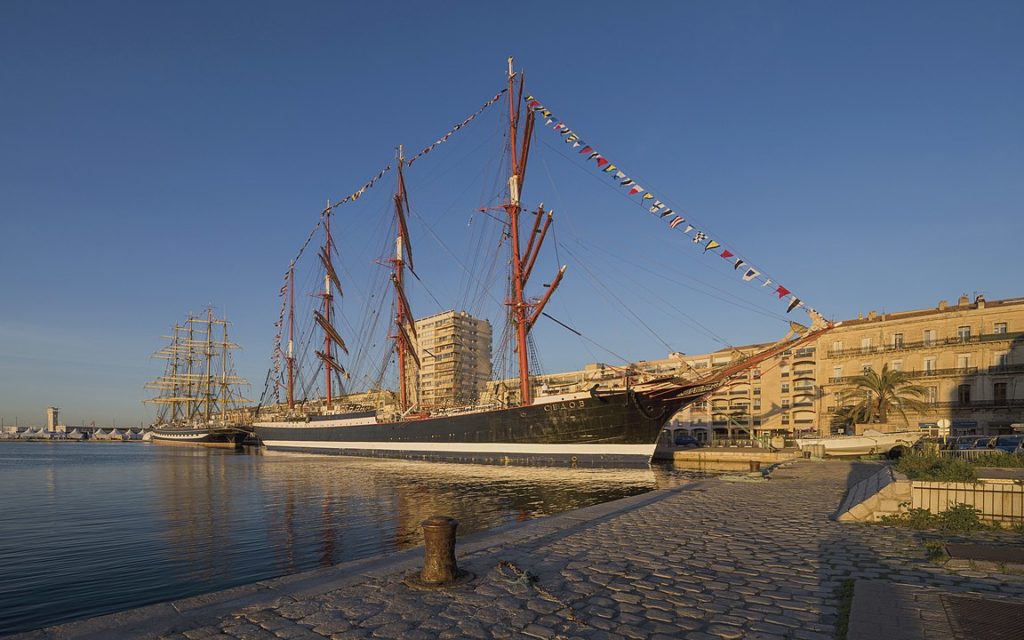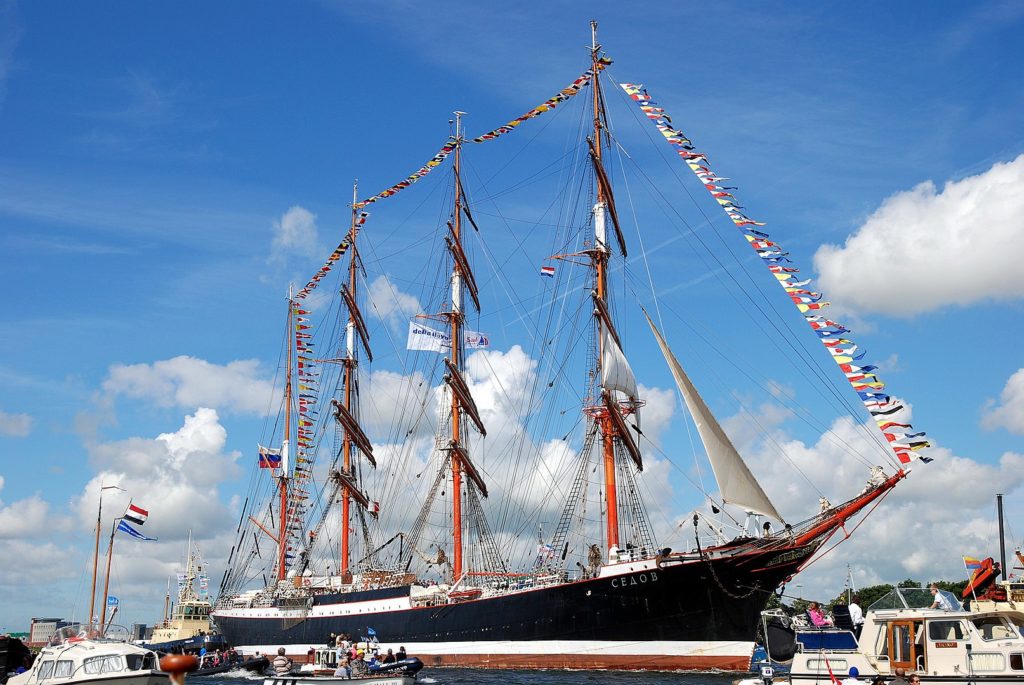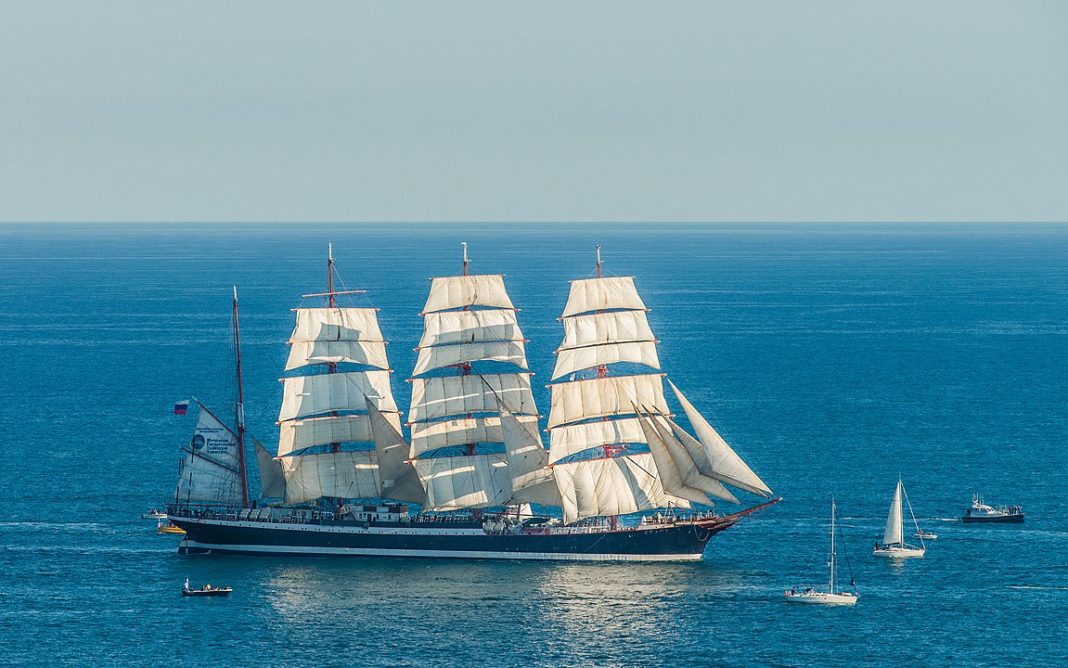Originally built as a German cargo ship, Sedov is today a sail training vessel, training cadets from the universities of Kaliningrad, Saint Petersburg, and Astrakhan. She participates regularly in the big maritime international events as a privileged host and has also been a regular participant in The Tall Ships Races.

Sedov can accommodate up to 320 people on board among which 75 are crew members, 100 to 120 cadets and in some years, as many as 45 trainees of any nationality to discover life aboard a tall ship. This training takes place during a journey of 3 to 4 months along European coasts and will take advantage of cultural and economic exchanges with the ports. Her carrying capacity is 1171 t DWT and her current draught is reported to be 6.3 meters. Her length overall (LOA) is 117.5 meters and her width is 14.62 meters.

Sedov, originally named Magdalene Vinnen II, was launched at Kiel, Germany in 1921 by the Friedrich Krupp Germaniawerft for the shipping company F. A. Vinnen & Co. of Bremen was one of the largest German shipping companies at the beginning of the 20th century. The shipping company initially objected to having an engine installed in the ship, but the shipyard (with backing from a Government committee) successfully argued for an engine, making the ship the first sailing ship with an auxiliary engine designed to modern principles.

Magdalene Vinnen II was at the time the world’s largest auxiliary barque and was exclusively used as a cargo ship with a crew that was partially made up of cadets. She sailed on her maiden voyage on 1 September 1921. Until her last voyage as Magdalene Vinnen II in 1936, the ship sailed to Argentina, South Africa, Australia, Reunion, and Seychelles.
She came under Russian state ownership after the surrender of Germany — on 20 December 1945, the British handed over the ship to the Soviet Union as war reparation.
In 2017, Sedov changed her home port to Kaliningrad and she is managed by the Kaliningrad State Technical University.
According to Wikipedia














